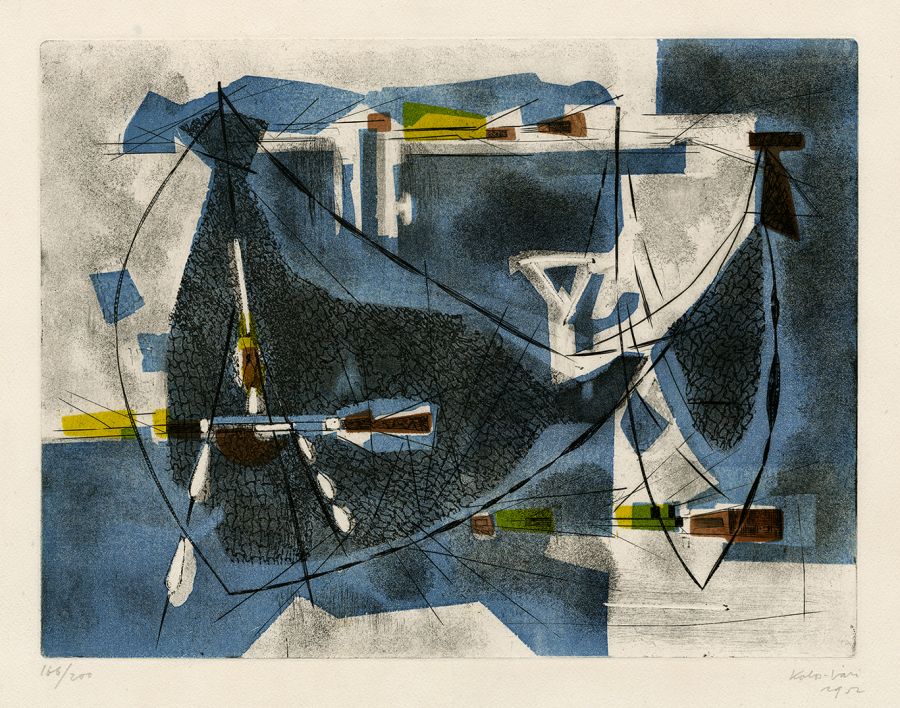Edition 200. Signed, dated 1952, and numbered '166/200' in pencil.
Image size 11 3.4 x 15 5/8 inches (298 x 397 mm); sheet size 15 x 22 1/4 inches (381 x 565 mm).
A superb, richly-inked impression, with fresh colors, on heavy, off-white Arches wove paper; the full sheet with margins (1 3/8 to 3 1/2 inches), in excellent condition.
Published by the Guide de la Gravure, Switzerland, with their blind stamp in the bottom left sheet corner.
ABOUT THE ARTIST
Sigismund Kolos-Vari was born in Hungary and attended the School of Applied Arts in Budapest from 1915 to 1918 and then the School of Decorative Arts until 1925. The artist settled in Paris, and his first one-person show in 1928 at Galerie Miromesnil, which was highly successful, led to numerous subsequent exhibitions, including with the prestigious Galerie Bonaparte in 1929 and Galerie Povolosky in 1930.
Kolos-Vari’s early success was abruptly interrupted by the outbreak of WWII when he was arrested by the Gestapo and imprisoned in the Gurs internment camp. During this period, he created a sketchbook for a little girl, which is now preserved at the Centre de Documentation Juive Contemporaine at the Mémorial de la Shoah in Paris. He managed to escape after two years, crossing the border into Switzerland. After the war, he returned to Paris with a renewed dedication to his painting, producing increasingly powerful compositions. His work was highly acclaimed when shown at an important 1946 exhibition at the Musée National d’Art Moderne de Paris, organized by Jean Cassou. The artist was then approached by the eminent art dealer Jean Bucher, who gave Kolos-Vary a major one-person show at his gallery in 1948. During this post-war period, Kolos-Vary participated in the radical Salon de Mai, 1949-1958, the Salon des Réalités Nouvelles, 1956-1961, and the Salon des Comparaisons, 1960-1962.
Supported by his association with Stanley William Hayter and the landmark printmaking workshop Atelier 17, Kolos-Vari’s work evolved into pure abstraction in the late 1950s. His writings explain that the wonderfully harmonious compositions of this period explore a new spatial interpretation inspired by nature and his self-examination of the subconscious. These evocative works brought the artist international interest, with exhibitions in New York in 1959, London in 1961, and Japan in 1961, as well as Geneva, Basel, Antwerp, Amsterdam, Brussels, and Milan.
Kolos-Vari's work received recognition through major art organization awards, including the Prix de la Critique in 1953, the Prix de Lissone in 1957, the Priz Marzotto in 1960, and the Prix des Onze in 1966.
The artist’s work is represented in museums internationally, including the Portland Art Museum; Hungarian National Gallery; Musée d’Art Moderne de la Ville de Paris; Musée National d’Art Moderne de Paris; Musée des Beaux-Arts, Lille; Museum of Fine Arts Budapest; and museums in Jerusalem, Pécs (Hungary), Algiers (Algeria), and Milwaukee (USA).



